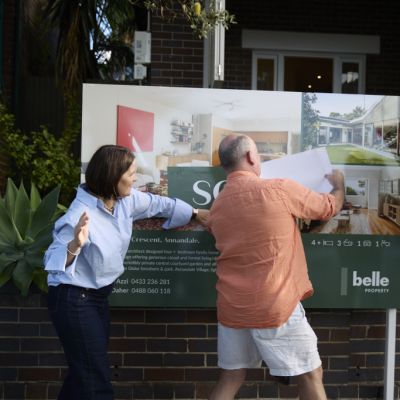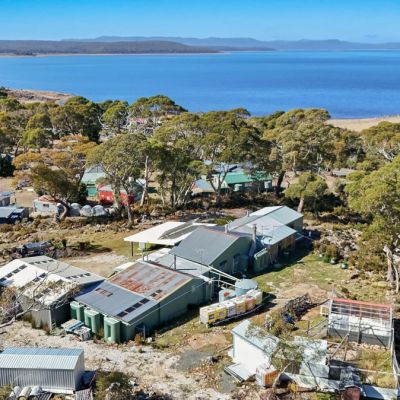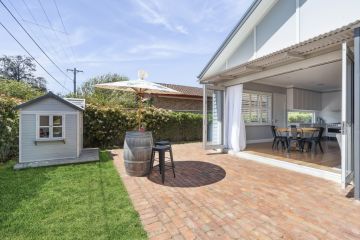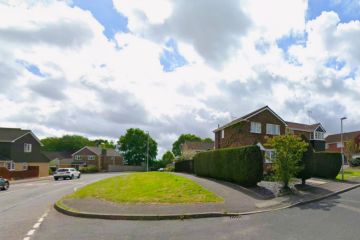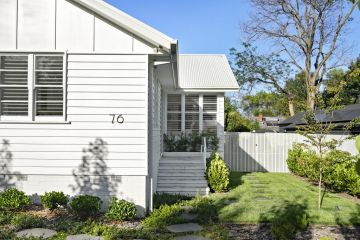‘We can fix it’: Housing affordability reaches worst levels yet
The cost of a typical Australian home has soared to 8.2 times as much as household incomes, the worst housing affordability on record.
First home hopefuls will be squeezed further by rising rents, as the share of income required to afford rent is also at a record high of 33.4 per cent, Cotality research released on Tuesday shows.

Experts warn property prices are likely to keep rising next year, despite efforts from different levels of government to improve affordability.
Australia’s median dwelling value is now $860,529, the Cotality Housing Affordability Report for November showed, compared with a median annual household pre-tax income of $104,390.
The dwelling value to income ratio has reached 10 times in Sydney, 8.8 times in Brisbane, 7.7 times in Perth and 7.1 times in Melbourne. Banks are often hesitant to lend more than five times incomes to home buyers.
For home buyers hoping to save a 20 per cent deposit, the typical Australian household would now take 11 years, the most on record, although the federal government has expanded access to its 5% Deposit Scheme.
The research warned of lagging residential construction, while demand has been supported by wages growth, a strong jobs market, rate cuts this year and population growth.
But efforts to build more homes from current and recent governments have not yet fully borne fruit.
“The supply side alone doesn’t get us there, especially in the current environment where construction costs are so elevated,“ Cotality head of Australian research Eliza Owen said.
“We’ve seen several instances of demand side stimulus, rather than demand side cooling, in the form of HomeBuilder and more recently the unlimited expansion of the 5% Deposit Scheme.”
Not all cities had peak unaffordability. Melbourne has eased amid significant new housing supply and an increase in taxes on secondary homes, plus loss of population during the lockdown years.
“I don’t think it’s quite fixed [in Melbourne],” Owen said. “You’ve still got a pretty high dwelling value to income ratio.”
Sydney’s dwelling value to income ratio has inched back from its peak but remains the nation’s highest.
Owen questioned why property prices were so high if housing was so unaffordable.
She found a gap of almost $300,000 between how much the typical household can afford to spend on a home, and what the typical home costs.
She found the typical home seller made a paper profit of just over $300,000, saying home sellers’ recent capital gains might be reinvested into the housing market.
“If you’re able to buy in this market it’s probably because you’re selling in this market,” she said, adding others might be accessing home equity to help children buy or passing on an inheritance.
For renters, Owen said a median income capital city household needs to spend 31.7 per cent of their income on rent, but a low-income household would need 53.8 per cent.
“It doesn’t work, and that’s where your lower income households need the boost to social and affordable housing, need Commonwealth Rent Assistance, and they’ve been more at risk.”
Owen said it was no longer enough for households to move somewhere cheaper.
“It just spreads the problem further,” she said. “The strongest rate of growth has been in the lowest value segment of the market and that’s because relatively high and median income households are turning to the low end of the market.
“They have greater purchasing power and that spills over to the next most affordable and the next most affordable until there is no next most affordable.
“So the solution needs to be very deliberate establishment of non-market housing … to protect people on lower incomes and to make sure key workers have decent access to the areas that they service.”
A separate report from SQM Research forecast property prices to rise next year, with a base case of 6 per cent to 10 per cent rises across the capital cities.
SQM managing director Louis Christopher expects the economy to be steady but sluggish and one to two rate cuts from mid-next year.
In this scenario, Sydney dwelling prices would rise 3 to 6 per cent, Melbourne 4 to 7 per cent, Brisbane 10 to 15 per cent and Perth 12 to 16 per cent.
AMP chief economist Shane Oliver said the shortage of housing relative to demand had been making affordability worse, alongside a long-term decline in interest rates, a concentration of population in a few major cities and the capital gains discount.
“Supply simply hasn’t kept up with demand. The last few years we should have been building 230,000, 240,000 homes a year. We’ve been starting 170,000,” he said.
“We can fix it. We have plenty of land in Australia but we lack the will to do so and we spend too much time arguing about what to do.”
We recommend
States
Capital Cities
Capital Cities - Rentals
Popular Areas
Allhomes
More
- © 2025, CoStar Group Inc.

